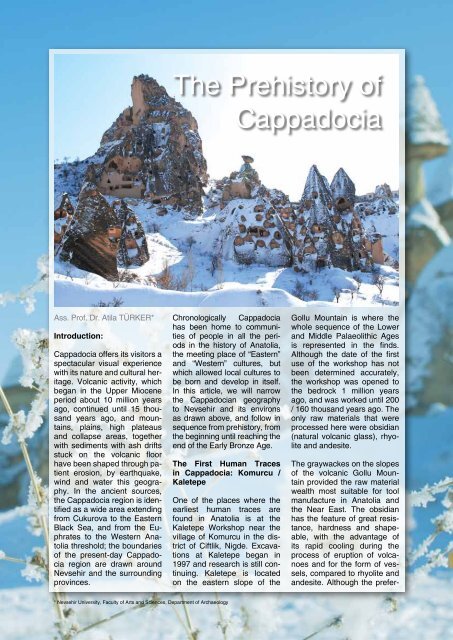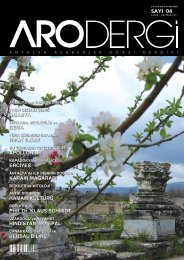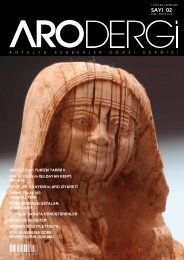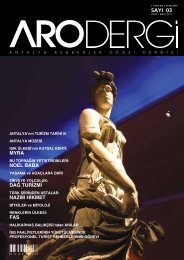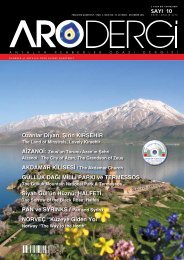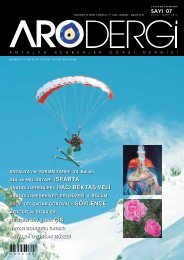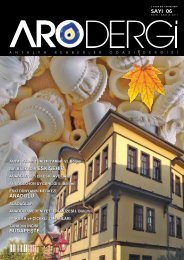Sayı 11- Ocak/Mart 2013 - Antalya Rehberler Odası
Sayı 11- Ocak/Mart 2013 - Antalya Rehberler Odası
Sayı 11- Ocak/Mart 2013 - Antalya Rehberler Odası
- No tags were found...
You also want an ePaper? Increase the reach of your titles
YUMPU automatically turns print PDFs into web optimized ePapers that Google loves.
The Prehistory ofCappadociaAss. Prof. Dr. Atila TÜRKER*Introduction:Cappadocia offers its visitors aspectacular visual experiencewith its nature and cultural heritage.Volcanic activity, whichbegan in the Upper Mioceneperiod about 10 million yearsago, continued until 15 thousandyears ago, and mountains,plains, high plateausand collapse areas, togetherwith sediments with ash driftsstuck on the volcanic floorhave been shaped through patienterosion, by earthquake,wind and water this geography.In the ancient sources,the Cappadocia region is identifiedas a wide area extendingfrom Cukurova to the EasternBlack Sea, and from the Euphratesto the Western Anatoliathreshold; the boundariesof the present-day Cappadociaregion are drawn aroundNevsehir and the surroundingprovinces.Chronologically Cappadociahas been home to communitiesof people in all the periodsin the history of Anatolia,the meeting place of “Eastern”and “Western” cultures, butwhich allowed local cultures tobe born and develop in itself.In this article, we will narrowthe Cappadocian geographyto Nevsehir and its environsas drawn above, and follow insequence from prehistory, fromthe beginning until reaching theend of the Early Bronze Age.The First Human Tracesin Cappadocia: Komurcu /KaletepeOne of the places where theearliest human traces arefound in Anatolia is at theKaletepe Workshop near thevillage of Komurcu in the districtof Ciftlik, Nigde. Excavationsat Kaletepe began in1997 and research is still continuing.Kaletepe is locatedon the eastern slope of theGollu Mountain is where thewhole sequence of the Lowerand Middle Palaeolithic Agesis represented in the finds.Although the date of the firstuse of the workshop has notbeen determined accurately,the workshop was opened tothe bedrock 1 million yearsago, and was worked until 200/ 160 thousand years ago. Theonly raw materials that wereprocessed here were obsidian(natural volcanic glass), rhyoliteand andesite.The graywackes on the slopesof the volcanic Gollu Mountainprovided the raw materialwealth most suitable for toolmanufacture in Anatolia andthe Near East. The obsidianhas the feature of great resistance,hardness and shapeable,with the advantage ofits rapid cooling during theprocess of eruption of volcanoesand for the form of vessels,compared to rhyolite andandesite. Although the prefer-* Nevsehir University, Faculty of Arts and Sciences, Department of Archaeology


